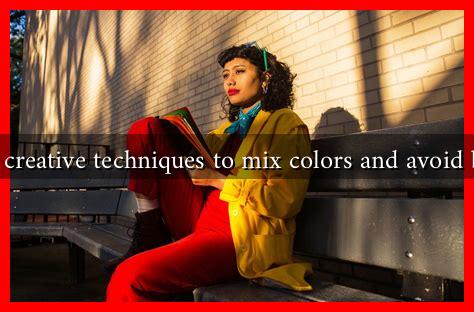-
Table of Contents
What are Creative Techniques to Mix Colors and Avoid Boredom?
Color mixing is an essential skill for artists, designers, and anyone involved in creative fields. The ability to blend colors effectively can elevate a project from mundane to extraordinary. However, many individuals often find themselves stuck in a rut, using the same color combinations repeatedly. This article explores creative techniques to mix colors and avoid boredom, ensuring your palette remains fresh and inspiring.
The Importance of Color Theory
Before diving into creative techniques, it’s crucial to understand the basics of color theory. Color theory encompasses the principles of how colors interact, including the color wheel, complementary colors, and color harmony. Familiarizing yourself with these concepts can provide a solid foundation for experimenting with color mixing.
Creative Techniques for Mixing Colors
Here are some innovative techniques to mix colors that can help you break free from monotony:
- Analogous Color Schemes: Use colors that are next to each other on the color wheel. For example, combining blue, blue-green, and green can create a harmonious and visually appealing palette.
- Triadic Color Schemes: Select three colors that are evenly spaced on the color wheel. This technique can produce vibrant and dynamic compositions. For instance, red, yellow, and blue can create a lively and balanced artwork.
- Monochromatic Mixing: Explore different shades, tints, and tones of a single color. This technique can add depth and dimension to your work while maintaining a cohesive look.
- Color Layering: Instead of mixing colors on a palette, try layering transparent washes of color. This technique can create unique effects and unexpected color interactions.
- Unexpected Combinations: Challenge yourself to mix colors that you wouldn’t typically pair together. For example, combining warm colors like orange with cool colors like teal can yield surprising results.
Incorporating Textures and Patterns
Mixing colors is not just about the hues themselves; textures and patterns can significantly enhance your color palette. Here are some ways to incorporate these elements:
- Textured Surfaces: Use different materials such as canvas, wood, or fabric to create varied textures. The surface can influence how colors appear and interact.
- Patterned Backgrounds: Incorporate patterns into your work, such as stripes or polka dots, to add visual interest. This can make even simple color combinations feel more dynamic.
- Mixed Media: Combine various mediums, such as watercolor, acrylic, and ink, to create unique color effects. Each medium has its own properties that can alter the appearance of color.
Case Studies: Successful Color Mixing in Art
Many renowned artists have successfully employed creative color mixing techniques in their work. For instance:
- Vincent van Gogh: Known for his bold use of color, van Gogh often used complementary colors to create vibrancy in his paintings. His work “Starry Night” is a prime example of how contrasting colors can evoke emotion.
- Pablo Picasso: During his Blue and Rose periods, Picasso explored monochromatic palettes that conveyed different moods. His ability to manipulate shades and tones within a single color family demonstrates the power of monochromatic mixing.
Statistics on Color Preferences
Understanding color preferences can also inform your mixing techniques. According to a survey conducted by the Color Psychology Institute, blue is the most preferred color worldwide, followed by green and purple. This knowledge can guide you in selecting colors that resonate with your audience.
Conclusion
Mixing colors creatively is an essential skill that can enhance your artistic expression and keep your work engaging. By understanding color theory, experimenting with various techniques, and incorporating textures and patterns, you can avoid the monotony of repetitive color choices. Remember to draw inspiration from successful artists and consider the preferences of your audience. With these strategies, you can ensure that your color palette remains vibrant and exciting.

